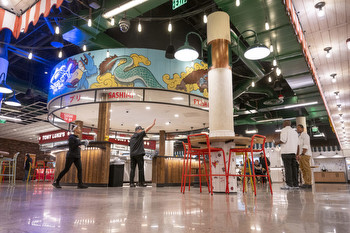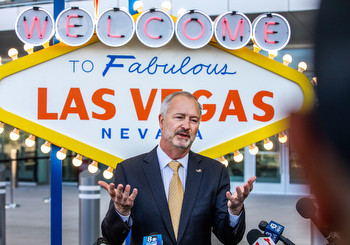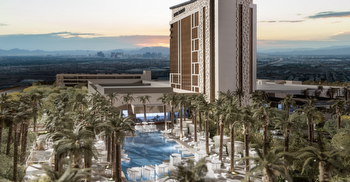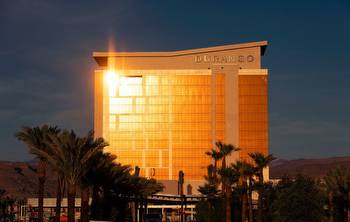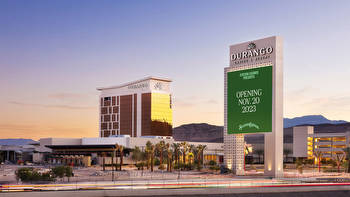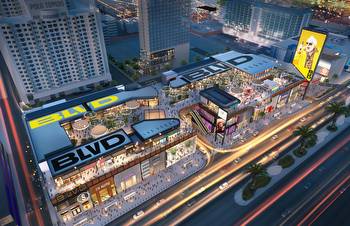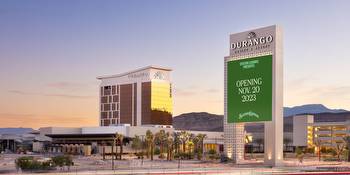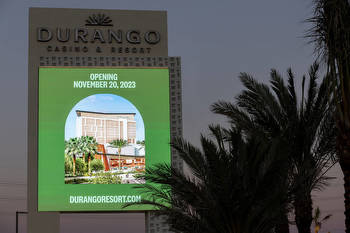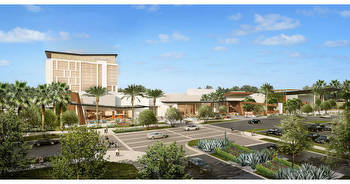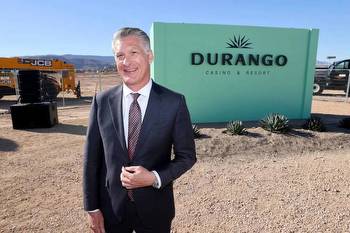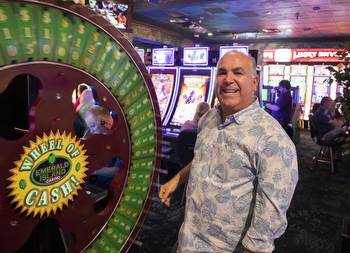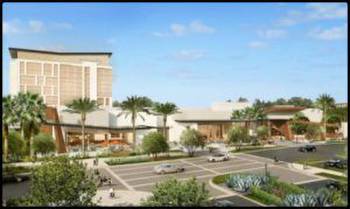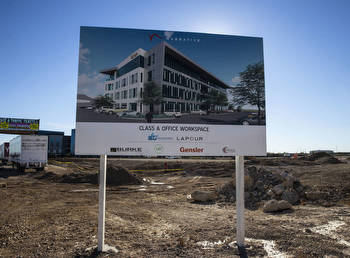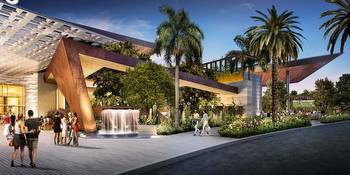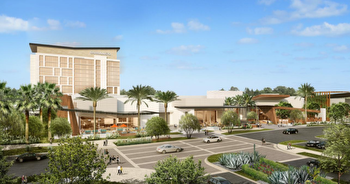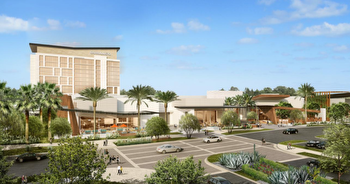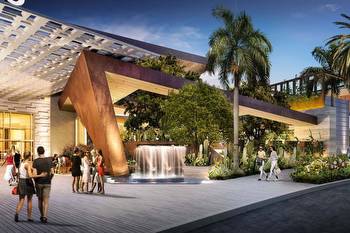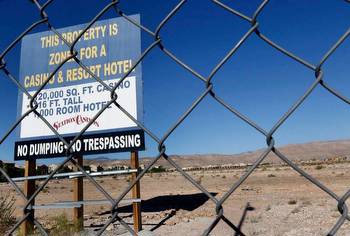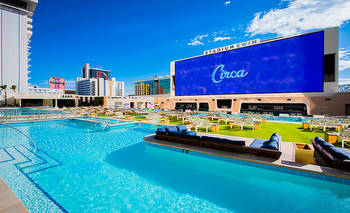‘Competitive socializing’ taking over Las Vegas retail
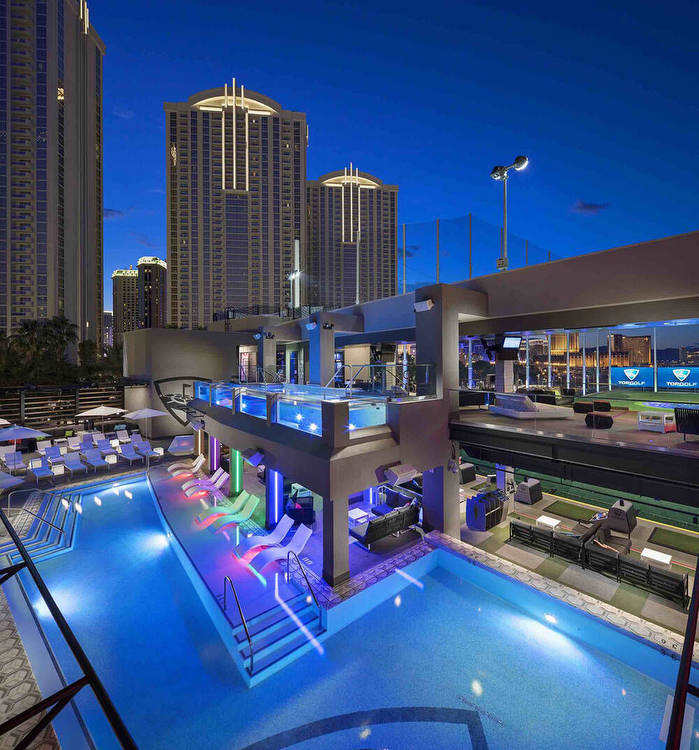
The biggest buzzword in retail real estate right now is actually two words, a Las Vegas Valley broker said.
“ ‘Competitive socializing’ is a huge part of experiential retail,” said Areeba Moten, senior associate for Colliers International and moderator of the Southern Nevada chapter of NAIOP’s panel on experiential retail held at the Orleans Thursday. “Basically the concept of you going out with your friends and eating and drinking, but then also throwing axes or mini golf or throwing darts like they do at the Venetian now.”
Experiential retail, a loosely defined term that encompasses everything from movie theaters and Top Golf to video arcades and pop-up shops, has hit its stride post-pandemic as consumers look to get out of the house and interact more with their local community and friend networks in person. Also know as “shoptainment”, the sector saw huge growth last year related to malls, as an McGraw Hill Education study noted an uptick in foot traffic across the U.S.
Frank Volk, executive vice president with CBRE Group Inc., said the idea is simple, people don’t want to simply go out for dinner and/or drinks anymore, their expectations have changed dramatically since COVID-19 and human interaction needs to be more “immersive.”
“It really is taking an activity, maybe enhancing it by technology, carrying it with hospitality, food and beverage and creating an extended stay so therefore you’re going to spend more money,” he said on the panel.
Las Vegas’ retail scene finds itself at a precarious time, as a second quarter Colliers International report shows the demand for retail space is slowing and new supply in the city has been waning since the third quarter of 2022. The sectors that are most active in leasing retail space over the past four quarters were food and beverage (18.4 percent), miscellaneous retail (16.1 percent), clothing and apparel (10 percent), health services (8.7 percent) and personal services like hair and nail salons (7.4 percent), the report shows. Traditional breadwinners such as home furnishings, general merchandise, building/garden and electronics saw negative growth over that time period.
Expansion of Area 15
One of Las Vegas’ biggest experiential retail success stories is Area15, an immersive arts-entertainment venue just west of the Interstate 15 and Resorts World Las Vegas. The project was seen as groundbreaking when it first opened in 2020, and is now expanding an additional 20 acres as locals and tourists flock to the site on a daily basis.
More than 85,000 square feet will be used for pop-ups and outdoor experiences which includes a decommissioned Boeing 747 aircraft to be repurposed for events, and Michael Casper, the vice president of Business Development for Area15, who was also on the panel, said consumers want even more now, as one experience per outing isn’t enough.
“Critical mass is important, and it’s one of the things that we’ve really focused on is having a lot of different experiences in one location because we find that people like to do two or three things at at time,” he said.
One of the biggest commercial projects coming to fruition this year is Durango casino-resort on South Durango Drive, which will feature 200 hotel rooms, convention and meeting space, a resort pool, outdoor social areas and free parking. The $780 million project is expected to be the only unrestricted gaming property in a 5-mile radius and is in one of the fastest-growing areas of the Las Vegas Valley.
Station Casinos, which owns Durango, is betting big on a suburban-located venue, said Randy Aguilar, the director of leasing for the company. Aguilar said casinos are the original “experience,” and that Durango is building off a new model and not just building casinos as “slotboxes.”
A less cramped location than what the Strip offers gives Durango the potential to expand out in the future, however noted the new normal is an expensive one in 2023. CBRE estimates construction costs for commercial builds could return to pre-pandemic levels sometime next year (they ended 2022 more than 14 percent higher that 2021), however the market is still susceptible to volatility due to a number of macro factors.
“The biggest issue is building these things,” he said. “The costs now are unbelievable, just before we built Durango, everything doubled, the cost of steel, the cost of wood, but that’s the cost of doing business now and you just have to figure it out.”








